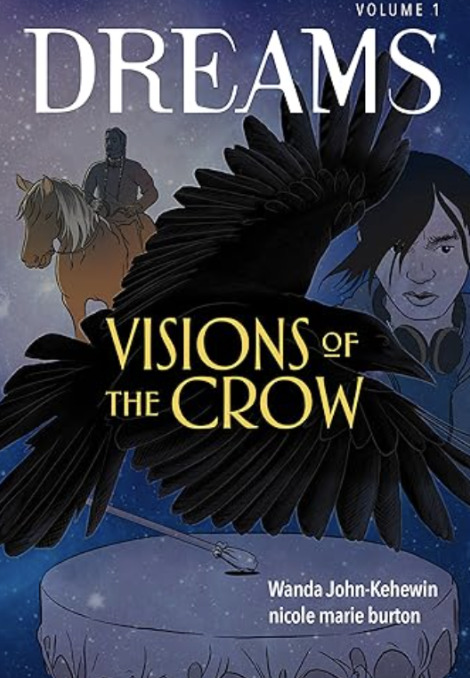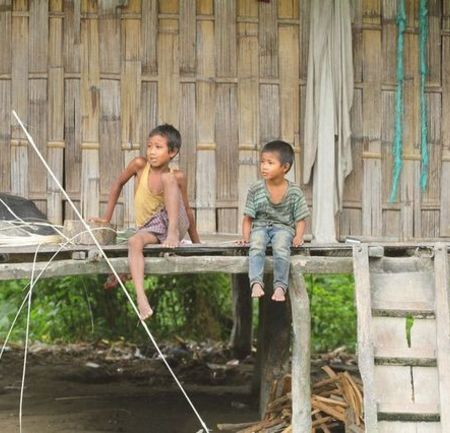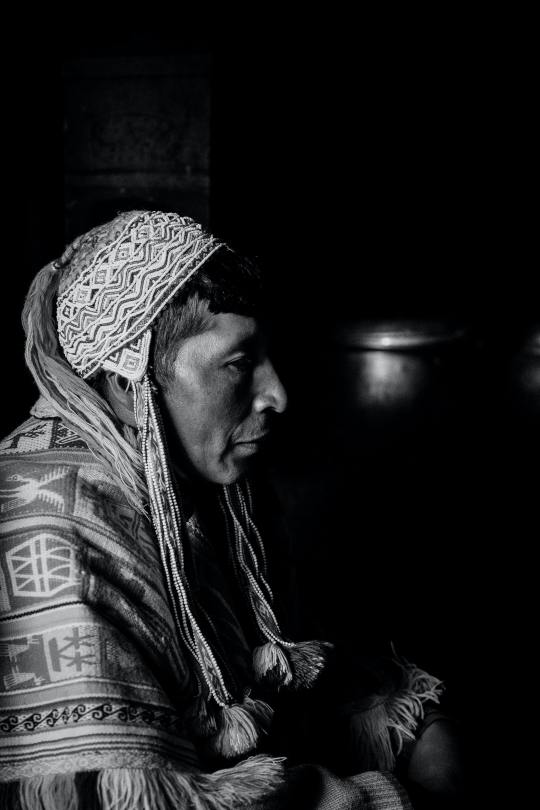#indigenousculture
Text

Male dancer at the Second Annual 2-spirit Powwow (Toronto, ON)
30 notes
·
View notes
Photo

Portrait of a Hamatsa shaman
Photograph By Edward S Curtis
1914
#native american#history#photography#united-states#indigenous#FirstNations#IndigenousCulture#Kwakwakawakw#PacificNorthwest
3 notes
·
View notes
Photo

FOR SALE This one is called CONNECTIONS. It is about our connection to country. The rainforests, deserts, rivers and oceans. We are all connected through country. Framed and sealed 50 x 60 acrylic on stretched canvas. Please message me if you are interested in purchasing. 🖤 💛 ❤️ 🖤 💛 ❤️ #indigenousart #indigenous #indigenousartist #art #dotpainting #firstnations #indigenouswomen #aboriginalart #warragamy #indigenouspeople #indigenousculture #contemparyart #contemparyindigenousart #indigenouspride #handmade #aboriginal #artist #aboriginalartist #indigenousland #australia #australian #alwayswasalwayswillbe #intuition #intuitiveart #buylocal #buyaustralian #paintpouring (at Bundjalung Country) https://www.instagram.com/p/CqK2yebBbHL/?igshid=NGJjMDIxMWI=
#indigenousart#indigenous#indigenousartist#art#dotpainting#firstnations#indigenouswomen#aboriginalart#warragamy#indigenouspeople#indigenousculture#contemparyart#contemparyindigenousart#indigenouspride#handmade#aboriginal#artist#aboriginalartist#indigenousland#australia#australian#alwayswasalwayswillbe#intuition#intuitiveart#buylocal#buyaustralian#paintpouring
2 notes
·
View notes
Text
Restoring the Kinship Worldview (2022) by Wahinkpe Topa and Darcia Narvaez

I saw this title on the always-wonderful University of California, Berkeley’s The Greater Good Science Center site and was intrigued (https://greatergood.berkeley.edu/article/item/can_the_indigenous_worldview_build_a_better_future?_ga=2.232959710.1321401351.1669667825-1489903705.1660343467), having a profound interest in Native American perspectives, ancient and contemporary. Restoring the Kinship Worldview combines both to champion the ideology of kincentrism to restore place-based knowledge and return to an Earth-based consciousness in this Anthropocene era. Whatever version of a “god” one wants to believe in, through this ideological lens they all get rebranded as Nature. Sadly, “western” culture has nearly separated life from every corner of Nature, and thus we have created our own hell (p. 128). We collectively need to re-embrace a Nature-as-god, Earth-as-fragile-home mindset, if not as religion. Freud called this an “oceanic feeling”; to Maslow it was “peak experience”, and, to Sagan it was the romantic association of us being “made from stardust”. Beautiful, romantic, poetic.
Wahinkpe Topa (Four Arrows) speaks of a pet theory he has, where:
“ . . . starting with Hinduism, all of the organized religions have a foundation that relates to original Indigenous worldview. I propose that the enlightened founders, all the way up through Jesus Christ, saw the devolution of human civilization and created ideas for returning to our original loving nature. My theory is that religions are an effort to rectify the horrors of hierarchy and the loss of egalitarianism and Nature-based thinking. Indigenous worldview is thus prevention oriented, knowing about the potential but not experiencing life based on greed and division. Over time, the teachings of the religious founders were modified by the political and social mores of the times to create orthodoxy that weakened the original intent. Post-contact efforts became conventional for maintaining the religion itself.
If generosity is learned by observing the natural world and our place in it, as I believe it is, Indigenous worldview is a necessity for returning to life based on generosity, it seems” (pp. 162-3).
While my opinion couldn’t mean any less, I agree with him, even if I choose to ignore the “spiritual” or sentient nature of Nature. Lovelock and Margulis’s Gaia Hypothesis/Paradigm works well for me. The Indigenous worldview aligns with so much of “paganism”, Buddhism, Wiccan, druidic, and Transcendentalist perspectives too. This is an incredibly OLD way of looking at the world and understanding our humble place within in, and one I embrace wholeheartedly, but I’m nowhere near perfect yet. This is not a peace-on-earth perspective, though sometimes the readings feel that way. On the one hand, it is our <i>relationship</i> with and to Nature that needs to drastically metamorphose, and on the other it is our relationship to one another that needs to be dynamically reorganized. This all needs to be done quickly too. Time is not on our side here. Humankind needs to endure some growing pains in this transformation, but ultimately it will lead to greater reward for all life on Earth, finding balance and equilibrium, and nurturing a symbiotic relationship to Gaia.
If you haven’t yet seen the doc film The Year the Earth Changed on Apple TV, hosted by Sir David Attenborough, please do so. The COVID-19 pandemic was a monstrous occurrence (still ongoing) that’s severity could have easily been avoided if morons (beholden solely to their financial portfolios over human lives) weren’t in charge of half the world. One of the only good things the pandemic did was convincingly illustrate how when humankind slows down its consumption, traffic, pollution, and waste, the Earth and its biosystems can vigorously heal. This film is a teaching moment for tectonic change and shows that when humanity is encouraged to act differently, truly incredible things can happen, growing pains included.
Change is happening of course, but it is both equally small and yet equally significant, from nuclear fusion to quantum computing, from reversible-rust batteries to the growing use of solar panels and wind turbines, from “green concrete” to the proliferation of backyard gardens, discussions about “the future of work”, and the surging e-bike movement across the globe. Momentum, investment, and mind-shifts are required from everyone on the planet. We need to accomplish more with less. We need to consume less, waste less, breed less, and crave less. Replacing the mining of oil with the mining of lithium with the mining of cobalt won’t help. Listening to the voices of the global Indigenous community can lead us into a better future, but we must turn our ears and open our minds to what they have to say. This book is a fantastic starting point, and the sources they cite will help empower every reader to pursue the Indigenous worldview more purposefully. I’ll include my list below to make it easier on folks, but there are plenty more mentioned in the text (I’ve already read several of them, such as Sand Talk: How Indigenous Thinking Can Save the World by Tyson Yunkaporta). Here’s to a better, more peaceful, inclusive, and humanistic-driven future.
Spirits of Blood, Spirits of Breath: The Twinned Cosmos of Indigenous America by Barbara Alice Mann (2016)
Neurobiology and the Development of Human Morality: Evolution, Culture, and Wisdom by Darcia Narvaez (2014)
Mother Earth Spirituality: Native American Paths to Healing Ourselves and Our World by Ed McGaa (2011)
Unlearning the Language of Conquest: Scholars Expose Anti-Indianism in America by Four Arrows (Don Trent Jacobs) (2010)
Columbus and Other Cannibals: The Wetiko Disease of Exploitation, Imperialism, and Terrorism by Jack Forbes (2008)
Concentric Ecology: Indigenous Perceptions of the Human-Nature Relationship by Enrique Salmon (2000)
The Spell of the Sensuous by David Abram (1997)
Yurugu: An African-Centered Critique of European Cultural Thought and Behavior by Marimba Ani (1994)
Africans and Native Americans: The Language of Race and the Evolution of Red-Black Peoples by Jack Forbes (1993)
2 notes
·
View notes
Photo

Tonight, I participated in the Indigenous Games, an event that is part of Team Lethbridge's portion of the 2022 @southernalbertasummergames. This lovely lady, who is Mary Ellen Little Mustache from Piikani First Nation, was so kind to take time out of her busy life to provide education on traditional Indigenous games for the Southern Alberta Summer Games. I was so very grateful to learn more about Indigenous/First Nations culture and traditions from her. @lethbridgesport #visitlethbridge #summergames #summervibes #sports #indigenous #indigenousculture #firstnations #piikani #culture #traditional #traditions #games #education #learning #lethbridge #lethbridgelife #albertacanada #outdoorslife #outdooradventures #greatoutdoors #lessonlearned #lifelesson #gratitudeattitude (at Lethbridge, Alberta) https://www.instagram.com/p/Cf-xEViuPY2/?igshid=NGJjMDIxMWI=
#visitlethbridge#summergames#summervibes#sports#indigenous#indigenousculture#firstnations#piikani#culture#traditional#traditions#games#education#learning#lethbridge#lethbridgelife#albertacanada#outdoorslife#outdooradventures#greatoutdoors#lessonlearned#lifelesson#gratitudeattitude
2 notes
·
View notes
Link
Discover Aboriginal Experiences (DAE), a collective dedicated to authentic, Aboriginal-guided tourism experiences in Australia, is proud to announce the launch of four new case studies. These case studies highlight the exceptional efforts of DAE member organizations in promoting sustainable tourism practices that benefit the environment, local communities, and cultural preservation. A Celebration of Sustainability Coinciding with Earth Day The launch of these case studies is strategically timed to coincide with Earth Day 2024, a global movement raising awareness about environmental protection. This strategic timing underscores DAE's commitment to sustainable tourism and aligns perfectly with current travel trends. Discover Aboriginal Experiences Champions Sustainable Travel: A Growing Priority for Travelers Statistics published by Statista reveal a significant shift in traveler preferences. Over 80% of global travelers now prioritize sustainable travel options. This growing demand is reflected in the booming eco-tourism industry, currently valued at a staggering US$172.4 billion. DAE Case Studies: Showcasing Sustainable Practices The four case studies delve into the inspiring work of DAE member organizations: Mabu Buru Tours (Western Australia): This tour operator prioritizes responsible land management practices, fostering a deep connection between visitors and the environment. Sand Dune Adventures (New South Wales): This company showcases the beauty of the Stockton Sand Dunes while implementing eco-friendly tour operations and promoting indigenous stewardship of the land. Wajaana Yaam (New South Wales): This organization focuses on preserving the cultural heritage of the Dharawal people and educates visitors about sustainable food practices. Maruku Arts (Northern Territory): This art center emphasizes the importance of sustainable resource management and incorporates eco-friendly practices throughout its operations. Detailed information about each case study can be found in Appendix 1 (not included here, but can be replaced with a link to the case studies). Interviews with representatives from these organizations can be arranged upon request. A Deep-Rooted Connection to the Land Australia's Aboriginal and Torres Strait Islander peoples hold a unique and profound relationship with the land. Unlike Western perspectives that view land as a commodity to be owned and exploited, Indigenous Australians see themselves and the land as intrinsically interconnected. Sustainability: A Core Value, Not a Trend The concept of sustainability isn't a recent trend for Indigenous Australians; it's a core value embedded in their culture for over 65,000 years. Their approach emphasizes living in harmony with the environment, respecting natural resources, and fostering a reciprocal relationship with the land. Sharing Culture and Inspiring Change "The core values of the DAE collective revolve around the Indigenous connection to Country," states Nicole Mitchell, Executive Officer of Discover Aboriginal Experiences. "These values include sharing culture through tourism, fostering thriving living cultures, promoting community well-being, and telling uniquely Australian stories." Spotlighting Leaders in Sustainability DAE is proud to highlight four members who exemplify these core values. Mitchell acknowledges that many other DAE members share this commitment to sustainability, and the organization plans to develop additional case studies in the coming months. The goal is to inspire travelers and journalists to recognize the positive impact of Aboriginal tourism on sustainability practices and cultural preservation. Recognition for Outstanding Efforts DAE's dedication to sustainability recently garnered recognition in Travel + Leisure's Global Vision Awards 2024. These prestigious awards acknowledge companies, individuals, destinations, and non-profit organizations leading the way in creating a more sustainable travel industry. This recognition serves as a testament to DAE's commitment to responsible tourism practices that benefit the environment, local communities, and cultural heritage. Embracing Aboriginal Tourism for a Sustainable Future Discover Aboriginal Experiences' launch of new case studies highlights the vital role Aboriginal tourism plays in promoting sustainability. By choosing Aboriginal-guided tours, travelers can gain a deeper understanding of Indigenous culture and its inherent connection to the land. This understanding can inspire more sustainable travel practices and contribute to a brighter future for our planet.
#AboriginalTourism#CaseStudies#CommunityWellbeing#DiscoverAboriginalExperiences#DiscoverAboriginalExperiencesChampions#EarthDay#environmentalprotection#IndigenousCulture#sustainabletourism
0 notes
Text

ITM 2024 Top Fiction Title
#dreamsvisionsofthecrow#wandajohnkehewin#nicolemarieburton#highwaterpress#portagemain#nativeyouth#ancestralpowers#culturalconnections#indigenousculture#familyandhealing#spiritanimals#youthinthemargins
0 notes
Text
Introducing our striking tee, "Native American," featuring a breathtaking desert sunset backdrop with the iconic bust image of a dignified Indian chief. This design encapsulates the rich cultural heritage and the serene beauty of Native American traditions. With no text, it allows the powerful imagery to speak for itself, making it more than just an outfit; it's a wearable homage to the wisdom, strength, and timeless connection with nature embodied by Native American culture. Wear it proudly and let the tee convey a silent but powerful narrative of respect and appreciation.
https://www.teepublic.com/t-shirt/55984514-native-american
#american indian#native american art#sunset#teepublic#indian#NativeAmericanArt#SunsetSilhouette#DesertVibes#IndianLandscape#TribalTee#SunsetInspiration#NativeAmericanFashion#DesertSunset#IndigenousCulture#SouthwestStyle
0 notes
Text
Tribal Kids, Mishing village, Panbari, Assam, India

Discover the colorful world of Tribal Kids in the Mishing village of Panbari, Assam.
0 notes
Text
Origins of Sydney and Melbourne: Unveiling the Meaning Behind 'Poak' and 'POI
youtube
Uncover the fascinating origins of Sydney and Melbourne as we delve deep into the meaning behind 'Poak' and 'POI'! 🌏✨ Join us on an exciting journey through history, culture, and language in this eye-opening exploration. From indigenous roots to modern metropolises, discover the rich tapestry of these iconic Australian cities. 🔍🏙️ Don't miss out on this captivating revelation!
#SydneyHistory#MelbourneOrigins#IndigenousCulture#CityMeaning#AustraliaHistory#PoakPOI#CityExploration#CulturalHeritage#HistoricalRevelation#MustWatchVideo#Youtube
0 notes
Photo

remarkist
#Let us help you discover a new show today that highlights the lives & experiences of Indigenous peoples. 📺 Which show will you watch next?#remarkist#remarkistapp#speakyourfandom#fandomwonderland#watchparty#watchparties#indigenouspeoplesday#indigenouspeople#indigenousculture#indigenousart#whattowatch#whattowatchnext#indigenouscomiccon#indigenouscommunity#indigenouscosplayer#happyindigenouspeoplesday#indigenouspeoples
0 notes
Text

Did you know there are TWO places claiming the world's largest peace pipe? 🌬️ Pipestone, Minnesota, and Zhiibaahaasing First Nation on Manitoulin Island both boast this title! 🍃 While we have the dimensions for the one in Minnesota, the size of the Zhiibaahaasing peace pipe remains a mystery. 🥁 Bonus: Zhiibaahaasing also has the world's largest dreamcatcher and drum!
7 notes
·
View notes
Text
🌾 Happy National Native American Day! 🌟
Today, we honor and celebrate the rich traditions, cultures, and remarkable accomplishments of the diverse Native American tribes. 🌄 It's a day to acknowledge the contributions of the indigenous peoples who have been an integral part of our nation's history. 🌿
Let's take a moment to appreciate their deep connection to the land, their beautiful artistry, and their enduring wisdom that continues to inspire us. 🏞️
As we commemorate this day, let's also recognize the importance of preserving and respecting their traditions, lands, and rights. Together, we can foster greater understanding and appreciation for the Native American heritage. 🌎

#NationalNativeAmericanDay#IndigenousPeoples#CulturalHeritage#Respect#Traditions#LandRights#Community#CelebrateDiversity#HonoringHistory#NativeAmericanPride#followme#blossomlifestylehub#empowerment#positivevibes#special days#IndigenousCulture#NativeArtistry#NativeWisdom#NativeLands#HeritagePreservation#NativeTraditions#IndigenousHistory#SupportIndigenousRights#UnityInDiversity#CulturalAppreciation
0 notes
Text
Happy International Day of World's Indigenous Peoples 2023
Happy International Day of World's Indigenous Peoples, 9 August, 2023. 2023 Theme: Indigenous youth as agents of change for self-determination.
#internationaldayofindigenouspeople#indigenouspeoplesday#indigenouspeopleday#indigenouspeople#indigenouspeoples#sofiaflorina#indigenouswomen#indigenousyouth#indigenousrights#indigenouslivesmatter#masyarakatadat#masyarakatadatnusantara#indigenouswomenrise#indigenousday#indigenousrising#indigenousculture#indigenousknowledge#indigenousresistance#hakmasyarakatadat#fyp#informasi#fyi#foryourinformation
0 notes
Text
0 notes
Photo

"A new exhibition at @theshedny in New York is a color-soaked, eye-opening look into Yanomami life—an Indigenous culture in the heart of the Amazon rainforest." Read @violetc0nroy on @claudia_anduja 'The Yanomami Struggle' at @anothermagazine via linkinbio. "Does art have the power to enact real political change? This is the question at the heart of 'The Yanomami Struggle,' a new exhibition organized by @fondationcartier at The Shed in New York City’s Hudson Yards. Focusing primarily on the color-soaked photographs of Claudia Andujar – a Swiss-born artist who has spent over five decades shooting and advocating for the Yanomami people, a group of approximately 54,000 individuals living in the Amazon rainforest across Brazil and Venezuela – alongside drawings, paintings and films by the Yanomami, this show positions art not just as activism, but also as transcendent aesthetic experience. 'I hope art can offer us the possibility to learn from other perspectives of the world,' says the exhibition’s curator @thyago1234 on the day of the opening. 'To see things that we couldn’t see otherwise, to listen, to feel, and to get closer to different people and different visions of this world.'" #yanomamistruggle #yanomami #claudiaanduja #indigenousculture #amazonrainforest https://www.instagram.com/p/Co8GKFzJIiM/?igshid=NGJjMDIxMWI=
0 notes